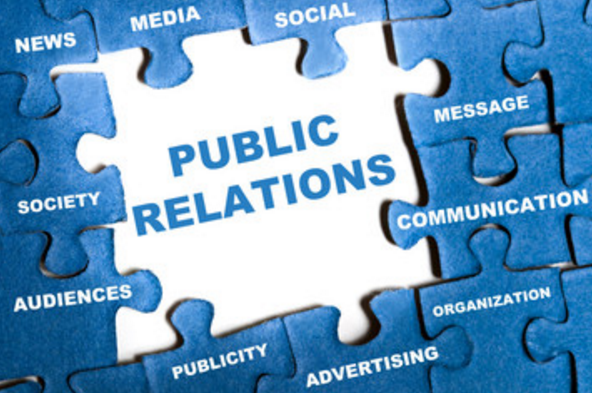
With all the headline news about tax reform and how it affects your taxes, don’t forget an essential element of support for many deductions based on the use of automobiles— your beginning mileage number. Whether you ultimately need it for your deduction off 2018’s taxes, if you don’t get the number now, you won’t have it next year when you need it. So, make sure you record the total current mileage on all your cars today and keep it someplace you will be able to get it at the end of next year. Your tax accountant or preparer will thank you!
Where is Your Public Relations?
 In the aftermath of the recent United Airlines fiasco, companies should take a very close look at where their Public Relations directors are reporting. United’s Public Relations Director reports to its head of human resources and labor relations. This is a mistake and may explain why United seems so inept at dealing with the problems they have encountered.
In the aftermath of the recent United Airlines fiasco, companies should take a very close look at where their Public Relations directors are reporting. United’s Public Relations Director reports to its head of human resources and labor relations. This is a mistake and may explain why United seems so inept at dealing with the problems they have encountered.
In today’s world, where social media can affect your bottom line in an instant, Public Relations needs to be elevated to the C-Suite. The best place for a Director of Public Relations to report is to the CEO.
Traditional management models have placed the most impactful divisions of a company as direct reports to the CEO. Since Human Resources, Sales and Marketing, Accounting and Finance, and Operations each significantly impact the bottom line, these traditionally have reported directly to the CEO.
Public Relations, for the most part, ended up as an extension of Sales and Marketing, as companies saw Public Relations as a means to get “free press”, or market exposure.
In today’s world, nothing can impact a company’s bottom line faster than social media. And the impacts can be, as in United’s case, immense. In light of this, companies would be well served to move their Public Relations to the C-Suite, reporting directly to the CEO.
Home Office Deduction Now Has Options
 The Internal Revenue Service for tax year 2013 has made taking a deduction for your home office easier. You can still use the old way (which may yield a higher deduction depending on your actual expenses and square feet used for your business) or you can use the new way, which is quite a simple calculation. But first, you need to make sure you qualify.
The Internal Revenue Service for tax year 2013 has made taking a deduction for your home office easier. You can still use the old way (which may yield a higher deduction depending on your actual expenses and square feet used for your business) or you can use the new way, which is quite a simple calculation. But first, you need to make sure you qualify.
Can I Take a Deduction for Business Use of my Home?
If you use part of your home for business, you may be able to deduct expenses for the business use of your home. The home office deduction is available for homeowners and renters, and applies to all types of homes, so long as the following is true:
1. You regularly and exclusively use part of your home for conducting business.
2. Your home is your principle place of business.
As long as both 1 and 2 are met, it does not matter whether you own your own business or whether you are an employee of someone else’s business.
What is the Simplified Option?
For taxable years starting on, or after, January 1, 2013 (filed beginning in 2014), you now have a simpler option for computing the business use of your home. For those who don’t like to keep track of their actual expenses, or who just didn’t keep track, the simplified method is like using the standard mileage rate for use of your car. All you need is number of square feet used.
The formula is very simple. You take the number of square feet of your home used for business and you times it by $5. For example, if you have a 10 foot by 10 foot office, you take 100 square feet (10 times 10) time $5 and you get $500. No fuss. No records.
There is one nasty catch, however. The maximum you can claim using this method is $1,500. That is equal to a 300 square foot office, which if square would measure 17.5 feet by 17.5 feet.
There is one big benefit, however, in addition to not having to keep records. You get to deduct all your schedule A items such as interest, property tax, etc., without adjustment.
The Actual Expenses Option
This option uses the actual expenses you incur to make the calculation. Here you add up your rent or mortgage interest, renters’ or homeowners’ insurance, real estate taxes and utilities, and multiply that times the percentage of your house allocable to your home office. For example, if all your allowed expenses add up to $35,000 and your home has 1,500 square feet and you use 100 square feet for your business, the calculation would be $35,000 divided by 1,500 times 100, (dollar amount of expenses times the percentage portion of your office), or $2,333. Your schedule A itemized expenses would then be reduced by any portion included in the $2,333 (the IRS won’t let you deduct it twice).
As a General Rule
As a general rule you can see that the larger your proportional use and/or the larger your total expenses, the Actual Expenses Option would give you a higher deduction, while the lower your proportional use and/or the lower your total expenses, the Simplified Method would give you a higher deduction. The only way to know for sure, however, is to keep your records and do the calculations both ways. Or, you can just bag it, and like standard mileage rates, just take what you can easily get.

If you want the most deductions possible, the most money back, the least amount of hassle, and you want it all legitimate and in compliance with all the tax laws, your very best bet may be to hire a professional. A professional who is worth their salt, will always be worth the money spent. Our sister company Wallace Associates Group is always there to answer your questions and help you determine which route is best for you.
Small Changes Can Make A Big Difference
People often spend countless hours developing a fine tuned business plan. They then bet their careers on successful implementation of their plan. What happens if there are slight changes in markets and conditions they so carefully analyzed in order to come up with their plan? If like the atomic clock versus the standard rotational clock, unless adjustments are made to keep the two in sync, catastrophe could result.
The time it takes for the earth to make one complete revolution is 86,400 seconds…almost. If left un-adjusted, after about 1,000 years our clocks would be off by about an hour. In 1972 a more accurate measurement of time was adopted, known by most of us as the atomic clock. This clock ticks with microwave light at about nine billion times each second, which allows for a much more precise form of measurement. Twenty-five times since 1972 we’ve had “leap- seconds”, which work like “leap-years” in keeping the two types of time measurements equal. The timing and amount of the clock adjustments are coordinated through the combined analysis of labs from 50 nations, each analyzing data in the respective locations. Today, in order to keep them equal, at 7:59:59 pm Eastern another 1 second adjustment will be made.
What could happen if these slight adjustments were not made? Navigations systems use extreme precision at the nanosecond level (one billionth of a second). For airplane navigation, satellite communications, etc., even a billionth of a second can be important. Remember, in one billionth of a second light travels about a foot.
Business leaders and managers could learn a lot from the world’s time-keepers. If each department (like the labs in different countries) constantly monitored and reported changes, and if leaders (like the 50 countries) used the provided information to make even small changes in their plans, their chances of avoiding catastrophes will be greatly increased.
